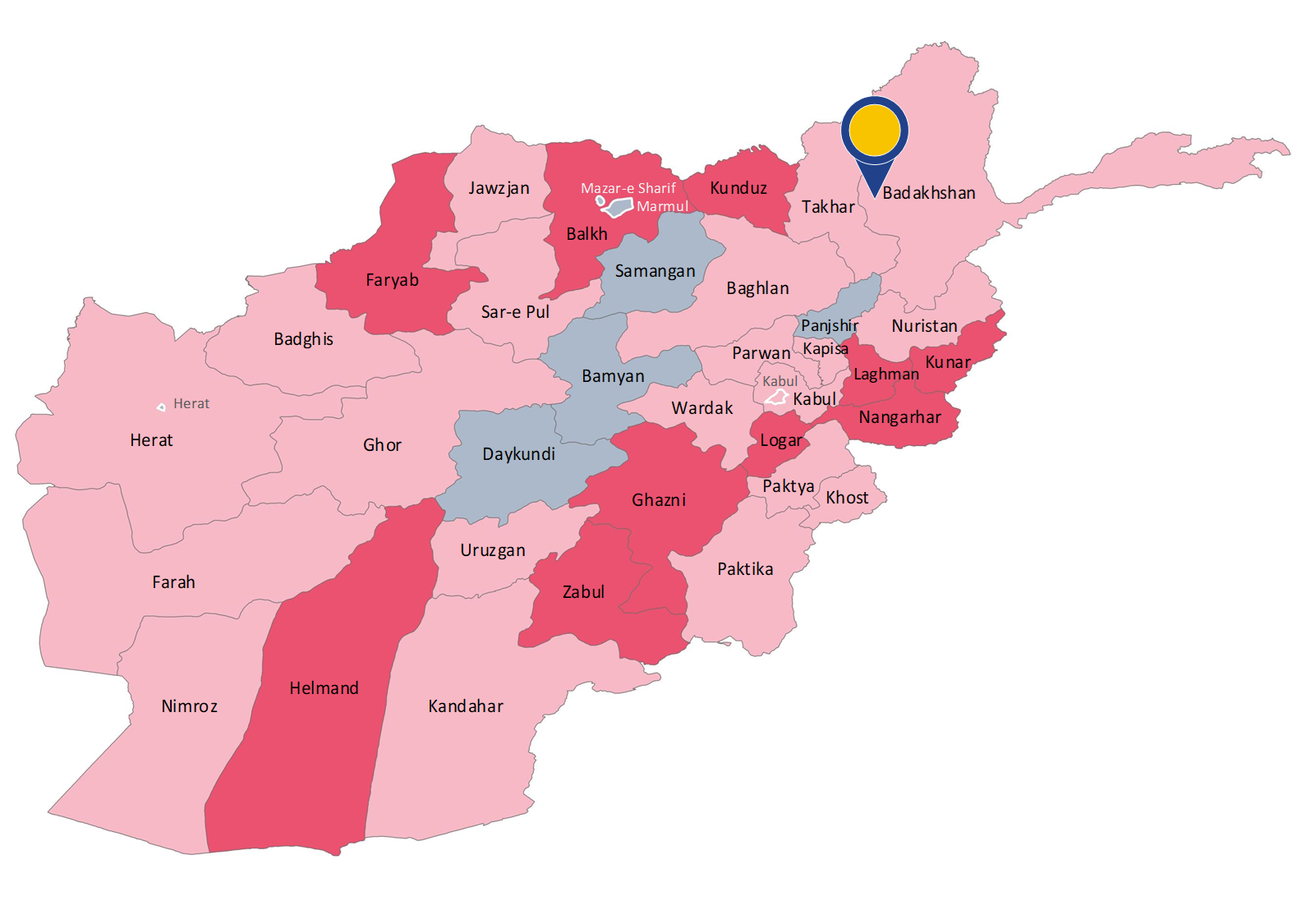|
⚠ |
|
Please note that this country guidance document has been replaced by a more recent one. The latest versions of country guidance documents are available at /country-guidance. |
The province of Badakhshan has a population of approximately 1 055 000. It is located in the north-eastern region of Afghanistan and borders Takhar, Panjshir and Nuristan, and shares an international border with Tajikistan, China and Pakistan. The province is divided into 28 districts. The main ethnic groups in the province are Tajiks and Uzbeks. As of July 2020, scheduled passenger services between the province capital Fayzabad and Kabul were provided.

It was reported that the Taliban had become increasingly successful in the province since 2015. Besides local Taliban fighters, Tajik, Uzbek, Uighur, and, to a lesser extent, Russian and Turkmen nationals were reportedly fighting in several districts of the province in 2017 and continued to be present in 2019 and 2020. Some of the foreign fighters are embedded within local Taliban structures, fighting alongside Afghan AGEs. Al Qaeda has been trying to strengthen its presence in Badakhshan. Small pockets of ISKP emerging in the province have also been reported.
20 of Badakhshan’s 28 districts were categorised by LWJ as contested, six as under government control, and two districts are considered under Taliban control.
ACLED collected data on 276 violent events in the period from 1 March 2019 to 30 June 2020 (average of 4 incidents per week), of which 186 were coded as ‘battles’, 81 as ‘explosions/remote violence’ and nine as ‘violence against civilians’.
Armed clashes between Afghan security forces supported by members of PGMs and Taliban fighters took place in all of the province’s districts. The majority of those armed clashes were attacks by the Taliban on Afghan security forces or attacks on military or police facilities, such as checkpoints, military bases, and sometimes attacks on vehicles. Security operations of Afghan security forces against AGEs aimed at recapturing districts, some of them backed by airstrikes, for example in Warduj and Nesay districts, have also been reported. Taliban or unidentified armed groups used roadside bombs and IEDs to target Afghan and international security forces and government officials. Some of these incidents caused civilian casualties. Other incidents categorised as ‘violence against civilians’ included the killing of MoI officials and of civilians accused of being government spies by the Taliban or by unidentified armed men.
Due to conflict in Nesay district, the main roads in some of the district’s villages were closed. Within the framework of its attacks on healthcare initiative, WHO registered the closure and reopening of health facilities.
UNAMA documented 106 civilian casualties (48 deaths and 58 injured) in 2019, representing 10 civilian victims per 100 000 inhabitants. This is an increase of 68 % compared to 2018. Leading causes of casualties were airstrikes, followed by ground engagements and targeted/deliberate killings.
RS ranked Badakhshan in the category of provinces where the number of civilian casualties was between 0 and 25 for the first quarter of 2020, and between 26 and 50 for the second quarter.
In the period 1 March 2019 – 30 June 2020, 33 208 persons were displaced from the province of Badakhshan, of which 97 % were displaced within the province itself. No conflict-induced internal displacement was reported from other provinces to Badakhshan in this period.
|
|
Looking at the indicators, it can be concluded that indiscriminate violence is taking place in the province of Badakhshan, however not at a high level and, accordingly, a higher level of individual elements is required in order to show substantial grounds for believing that a civilian, returned to the territory, would face a real risk of serious harm within the meaning of Article 15(c) QD.
|
Main COI reference: Security situation 2020, 2.2
